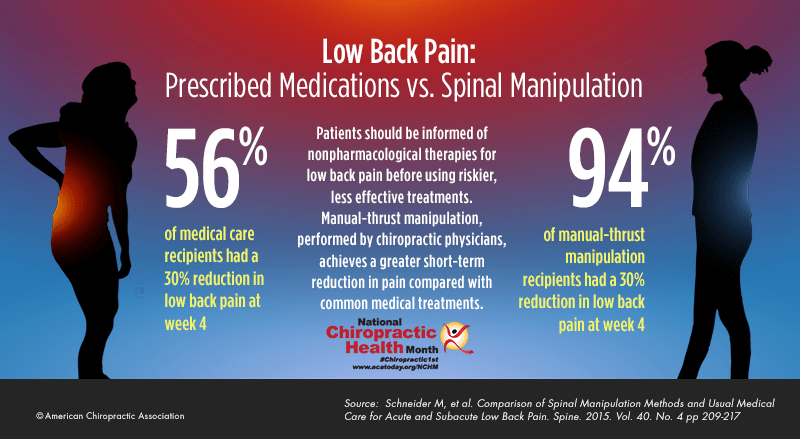The Effect of Spinal Manipulation on Deep Experimental Muscle Pain in Healthy Volunteers
SOURCE: Chiropractic & Manual Therapies 2015 (Sep 7); 23: 25
Søren O’Neill, Øystein Ødegaard-Olsen and Beate Søvde
Institute of Regional Health Research,
University of Southern Denmark,
Campusvej 55, Odense, 5230 DK Denmark ;
Spine Centre of Southern Denmark,
Lillebælt Hospital, Østre Hougvej 55,
Middelfart, 5500 DK Denmark
BACKGROUND: High-velocity low-amplitude (HVLA) spinal manipulation is commonly used in the treatment of spinal pain syndromes. The mechanisms by which HVLA-manipulation might reduce spinal pain are not well understood, but often assumed to relate to the reduction of biomechanical dysfunction. It is also possible however, that HVLA-manipulation involves a segmental or generalized inhibitory effect on nociception, irrespective of biomechanical function. In the current study it was investigated whether a local analgesic effect of HVLA-manipulation on deep muscle pain could be detected, in healthy individuals.
METHODS AND MATERIALS: Local, para-spinal muscle pain was induced by injection of 0.5 ml sterile, hyper-tonic saline on two separate occasions 1 week apart. Immediately following the injection, treatment was administered as either a) HVLA-manipulation or b) placebo treatment, in a randomized cross-over design. Both interventions were conducted by an experienced chiropractor with minimum 6 years of clinical experience. Participants and the researcher collecting data were blinded to the treatment allocation. Pain scores following saline injection were measured by computerized visual analogue pain scale (VAS) (0-100 VAS, 1 Hz) and summarized as a) Pain duration, b) Maximum VAS, c) Time to maximum VAS and d) Summarized VAS (area under the curve). Data analysis was performed as two-way analysis of variance with treatment allocation and session number as explanatory variables.
RESULTS: Twenty-nine healthy adults (mean age 24.5 years) participated, 13 women and 16 men. Complete data was available for 28 participants. Analysis of variance revealed no statistically significant difference between active and placebo manipulation on any of the four pain measures.
There are more articles like this @ our:
Chiropractic and Spinal Pain Page and the:
CONCLUSION: The current findings do not support the theory that HVLA-manipulation has a non-specific, reflex-mediated local or generalized analgesic effect on experimentally induced deep muscle pain. This in turn suggests, that any clinical analgesic effect of HVLA-manipulation is likely related to the amelioration of a pre-existing painful problem, such as reduction of biomechanical dysfunction.
From the FULL TEXT Article:
Background
Spinal manipulation is commonly used in an effort to alleviate musculoskeletal pain, but the exact mechanisms by which such treatments can reduce pain are not well understood. It is commonly assumed however, that when pain arises from biomechanical dysfunction, spinal manipulation may affect pain relief through the reduction of such dysfunction. Pain relief following spinal manipulation is thus assumed to indicate curative treatment of painful biomechanical dysfunction.
A number of clinical studies now indicate, that spinal manipulation may be a prudent choice for patients with musculoskeletal pain, not least spinal pain syndromes [1]. It is difficult however, to reliably identify those patients who are most likely to benefit from spinal manipulation and it is also a challenge to demonstrate the presence of biomechanical dysfunction in a valid and reliable manner [2], [3].
Read the rest of this Full Text article now!





Leave A Comment